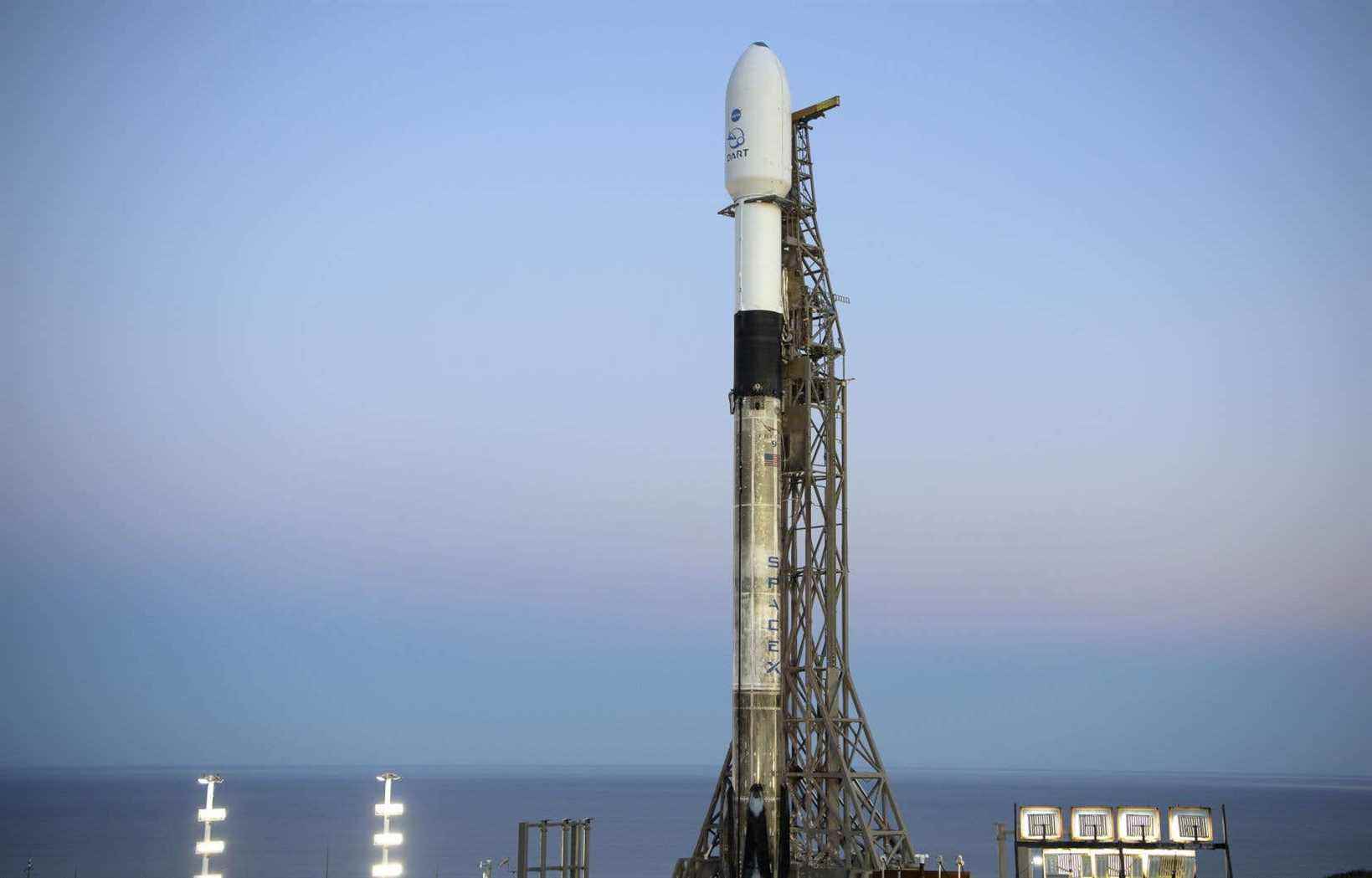It’s a Hollywood-worthy scenario, yet real. NASA is preparing to launch an unprecedented mission overnight from Tuesday to Wednesday: by projecting a spacecraft at 24,000 km / h against an asteroid, it hopes to change its trajectory and thus help humanity protect itself from an asteroid. potential collision in the more or less distant future.
This test “will be historic,” said Tom Statler, a NASA scientist participating in this mission, at a press conference. “For the first time, humanity will change the movement of a natural celestial body in space. “
This is only a dress rehearsal, the target asteroid does not represent a threat to Earth. But the goal is taken very seriously by the US Space Agency.
It currently lists just over 27,500 asteroids of all sizes close to Earth and “none of them pose a threat in the next hundred years or so,” said reassuringly Thomas Zurbuchen, director for scientific missions to NASA.
Experts estimate, however, that they are only aware of 40% of asteroids measuring 140 meters or more, with the majority yet to be discovered. The idea is therefore to develop a technique to protect against it in the event of future threats.
The mission, baptized Dart (dart, in English), will take off from California’s Vandenberg base aboard a SpaceX Falcon 9 rocket, at 10:21 p.m. local Tuesday (1:21 a.m. Wednesday in Quebec).
10 short minutes
The ship is smaller than a car, flanked by two long solar panels. It is due to strike next fall, in about ten months, an asteroid the size of a football field (about 160 meters in diameter), which will then be located eleven million kilometers from Earth.
The asteroid is called Dimorphos and is actually a moon, orbiting a larger asteroid named Didymos (780 meters in diameter).
To circle the large asteroid, Dimorphos currently takes 11 hours and 55 minutes. Scientists expect to reduce its orbit by about 10 minutes.
“It’s a very small change, but it might be all we need to deflect an asteroid having a collision course with Earth, if we ever had to, provided we discovered this asteroid soon enough. ”, Explained Tom Statler.
The exact effect the impact will have is not known at the moment, as it depends in particular on the composition of the asteroid.
It is this precise change in trajectory that will then be measured using telescopes from Earth, that scientists want to determine. The results will be used in calculations to help determine, in the future, how much mass must be projected against a given type of asteroid to cause sufficient deflection.
The total cost of the mission – the first interplanetary mission launched by Elon Musk’s company for NASA – is US $ 330 million.
Other techniques are being considered to deflect an asteroid. For example by carrying out a nuclear explosion near one of them, not to destroy it, but to divert its trajectory by ricochet. The gravitational force of a ship flying near an asteroid for a long time could also be used.
That said, the technique tested here, called kinetic impact, is by far the most mature. As long as it proves itself during this test.
